Comparison of hosting control panels: cPanel vs. vDeck
Comparison of cPanel and vDeck hosting control panels
1. Introduction
The hosting control panel is an online environment that provides the user with an intuitive (or damn inconvenient) web interface to manage all the necessary settings for the web server. Thanks to the convenient web interface, the user does not need specific knowledge about the web server commands (for example, “ / scripts / killacct” - deleting a domain or “ vi / var / named / domain.db” - when editing DNS records of a domain) or the location of configuration files (for example, the Apache configuration file, path: “ /usr/local/apache/conf/httpd.conf ”).
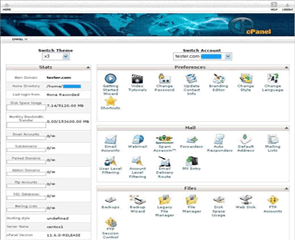

2. Categories for evaluating and comparing hosting control panels
To compare the two control panels, the following parameters were considered:
- Supported Operating Systems
- Multilingualism
- Work with domains and subdomains
- Mail User Administration
- Ftp user administration
- Setting up and administering a MySQL database
- Web server statistics usability
- Convenience of working with files on the server
- Security setting
3. Comparison of cPanel and vDeck Panels
This review covers two products: cPanel , a well-known and popular hosting control panel, and vDeck , a convenient and undeservedly deprived panel of popularity.

Fig. 1. The preferred panel is voting on the webhostingtalk forum .
Both panels have one goal - to give the average web hosting user the ability to manage his piece of the web server without diving into the wisdom of administering web servers.
3.1. cpanel
Panel site http://www.cpanel.net/ . The product has existed since 1997. On the cPanel website there is a description of the product, the system requirements are clearly listed (http://goo.gl/6d2v) and it is possible to go to the demo panel ( http://goo.gl/lU54v ).
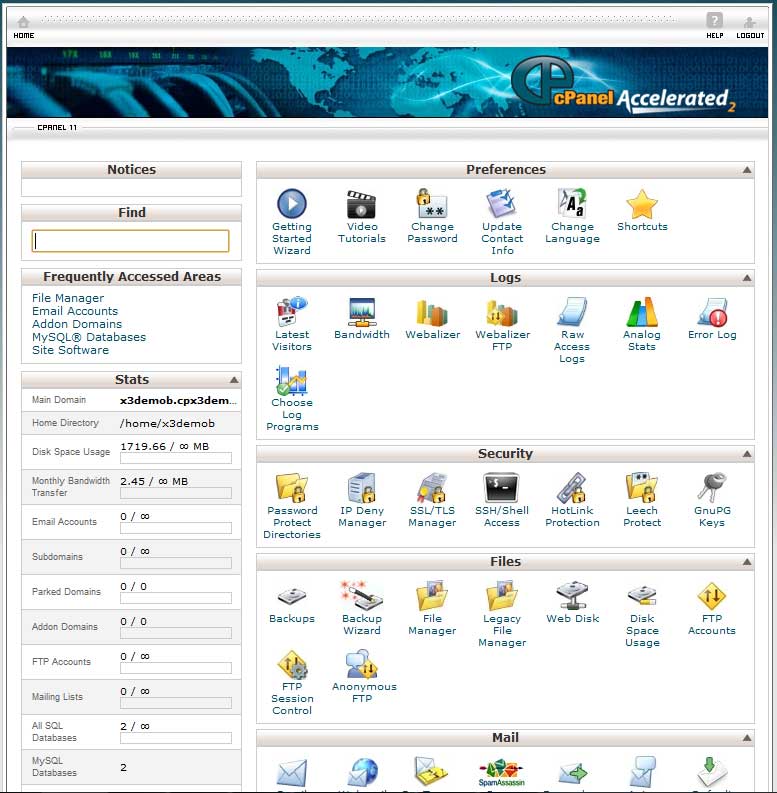
Figure 2. The cPanel window.
The main window of cPanel consists of two vertical parts, on the left there is information about available and already used by the user hosting resources, and on the right - shortcuts for performing various functions are collected in thematic groups in separate blocks.
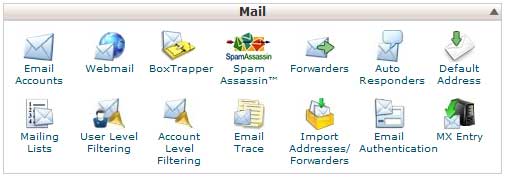
Figure 3. Mail shortcut group in cPanel
These blocks can be collapsed so that they do not take up space on the screen, as well as drag and drop the mouse in a convenient order for the user. If the user does not understand something, then he can watch the training video, links to which are present in each section.
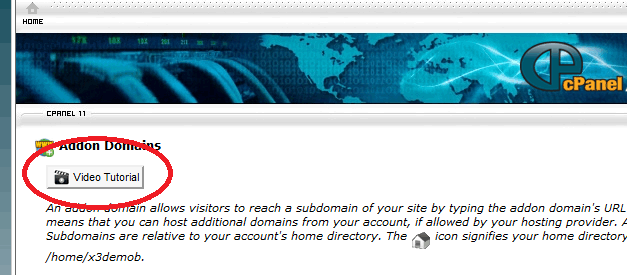
Fig. 4. Button for viewing video instructions in cPanel
Everywhere where you need to specify a password for the convenience of the user, “Password Generator” is offered.
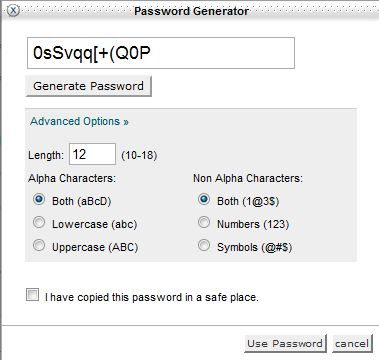
Figure 5. Password generator in cPanel.
3.1.1. Supported Operating Systems and System Requirements
cPanel requires at least 512 MB (and optimally 1 Gb) of RAM and 10 GB of disk space. cPanel can work on the basis of such OSs:
- CentOS versions 4.x, 5.x, 6.x
- Red Hat Enterprise Linux versions 4.x, 5.x, 6.x
- FreeBSD-RELEASE versions 7.3, 7.4, 8.0, 8.1, 8.2
- CloudLinux 5.x, 6.x
CPanel also supports working in a virtual environment created on the basis of:
- Kvm
- Linux-VServer
- Microsoft Server 2008 Hyper-V
- OpenVZ (stable releases only)
- Oracle VM VirtualBox, VirtualBox OSE
- Virtuozzo
- VMware Server, VMware ESX Server
- Xen, XenEnterprise, XenExpress, XenServer
Limitations: since licensing takes place by IP addresses, a web server must have a dedicated IP address for the panel to work. CPanel cannot work with a shared, dynamic address or because of NAT #.
3.1.2. Multilingual
cPanel interface translated into 14 languages:
- Arabic
- German
- English
- Spanish
- Iberian spanish
- French
- Hindi
- Dutch
- Polish
- Portuguese
- Brazilian
- Portuguese
- Romanian
- Russian
- Chinese
3.2. vDeck
Panel site http://vdeck.com/ . Exists since 1999, an example from the web archive http://goo.gl/AoiBQ. The requirements of the control panel for the operating system and technical specifications of the server on the site are not indicated and are not known. It is used exclusively in the United States, an incomplete list of customers .
It is known that this panel is used by companies that provide shared hosting on linux servers.
4. Functionality and usability of panels
4.1. Ease of working with domains and subdomains
Actions to manage domains and their settings are not the most often required when using hosting, but this is an important and necessary function.
4.1.1. cPanel
Adding additional domains and subdomains is conveniently organized; when adding a domain, you can immediately create an FTP user, select a folder where the domain files will be located, and the default folder is immediately offered after specifying the domain or subdomain name.
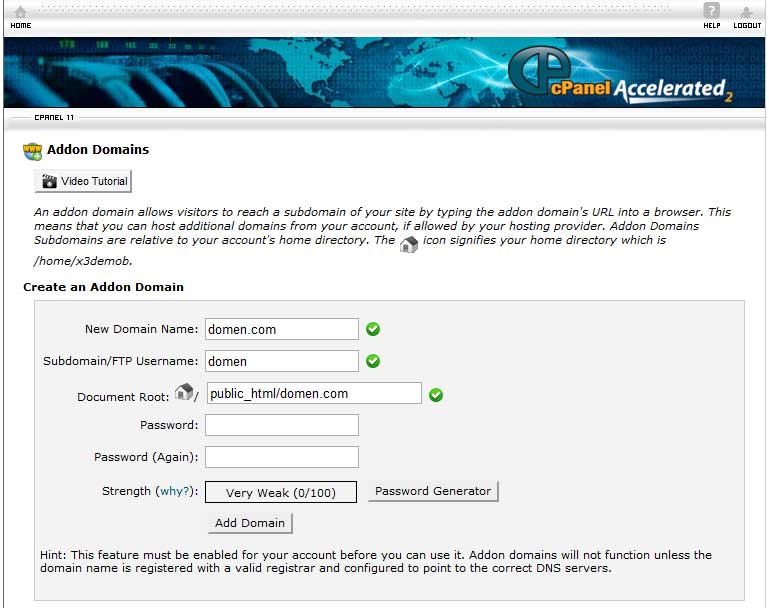
Fig 6. The screen for adding a domain to cPanel
The panel provides the ability to edit DNS - zones for domains. There are two types of editors for DNS zones to choose from.
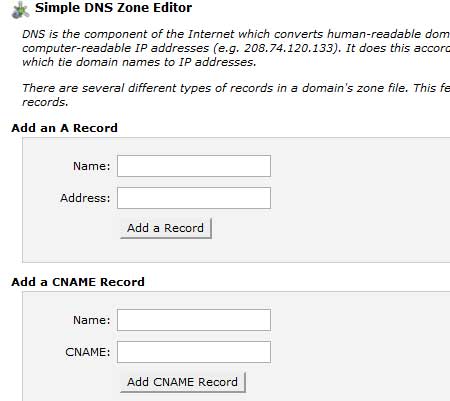
Fig 7. Simple editor of DNS zones in cPanel.
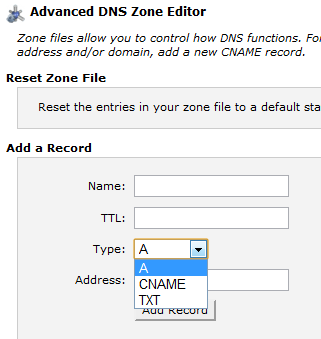
Fig 8. DNS editor - zones with advanced cPanel functions.

Figure 9. Redirect editor in cPanel.
Thus, the user receives as part of cPanel a convenient interface to all the necessary functions for domain management:
- add, edit settings and delete domains
- add, edit settings and delete subdomains
- editing DNS - records for domains
- creating and changing redirects for domains or subdomains
- parking additional domains
4.1.2. vDeck
In the vDeck panel, work with domains is performed in the “DomainCentral” section.
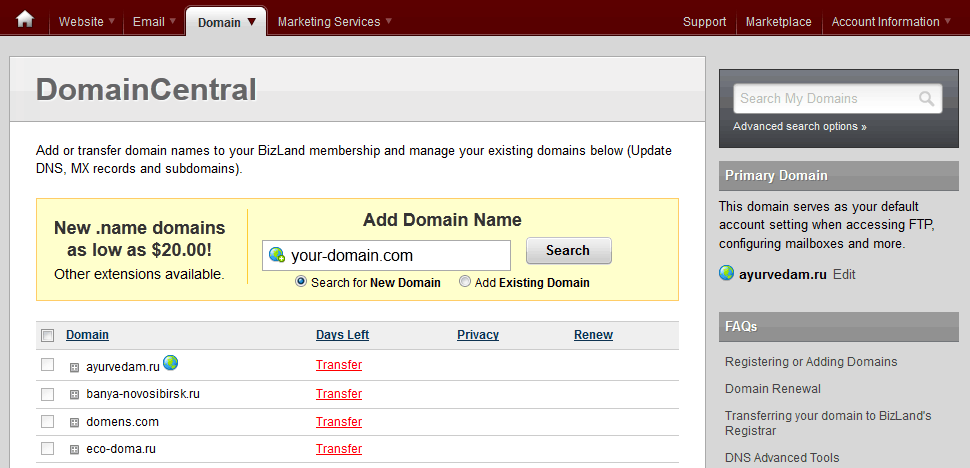
Figure 10.
Domain management in vDeck After adding a domain, all management is logically built around this domain, in its properties you can configure DNS servers, add or remove subdomains, edit DNS records (depending on the panel version). In the menu item “Pointers” you can specify the folder in which the site files are located, configure a redirect to the specified URL or make this domain parked.
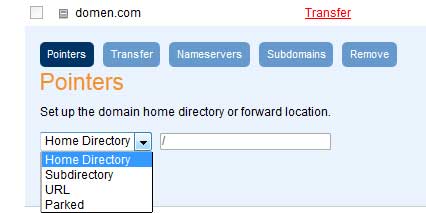
Figure 11. Setting domain properties.
4.2. Work with mail and administration of mail users
The tasks of managing mail on a web hosting are divided into several types:
- Email Account Management
- Mail traffic management
- Configure spam protection
4.2.1. cPanel
When creating a mail account, you can specify the maximum mailbox size or remove the restriction completely.
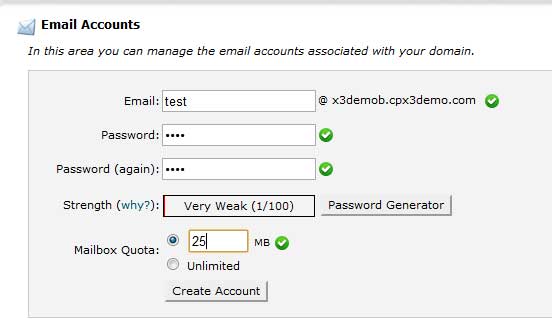
Figure 12. Creating a new cPanel mailbox
You can use one of three programs to access mail through the web interface:
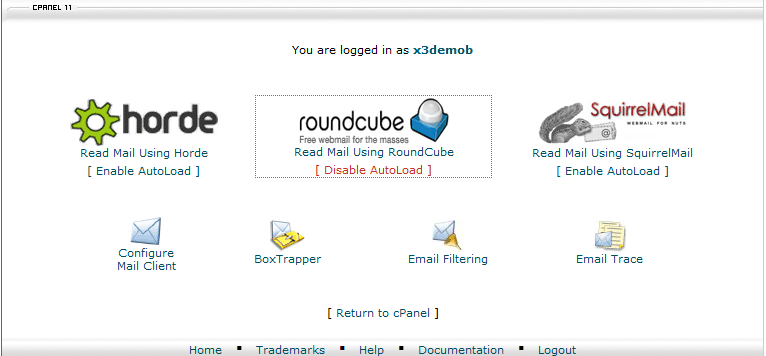
Figure 13. Options for web clients for working with mail in cPanel.
A user in cPanel has the following features for controlling the movement and processing of email:
- answering machine
- automatic mail forwarding
- automatic user filters
- mailing lists
To protect against spam, there is:
- automatic verification of new senders (BoxTrapper)
- spam filtering program “SpamAssassin“
Fig. 14. The main window for managing the program“ SpamAssassin ”as part of cPanel.
The user has the ability to:
- enable or disable the use of “SpamAssassin”
- set the number of points upon reaching which the message will be considered spam.
- enable or disable automatic removal of received spam.
- and also, in the advanced settings, you can explicitly specify 1 - 5 addresses to add to the “black list” and “white list”.
Fig. 15. Additional settings in the program“ SpamAssassin ”as part of cPan.
4.2.2. vDeck
The email management section in the vDeck panel allows you to configure the following options:
- email users
- web-based mail access
- car attendants
- email auto collectors
- spam protection settings
- mailing list management
Mail users are managed in the “Mail Central”
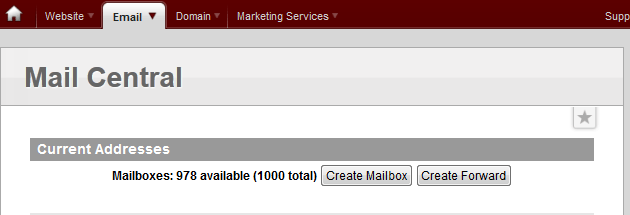
section . Fig. 16. Mail Central section in the vDeck panel.
When creating a user, only his address and password are indicated, the disk quota cannot be specified.
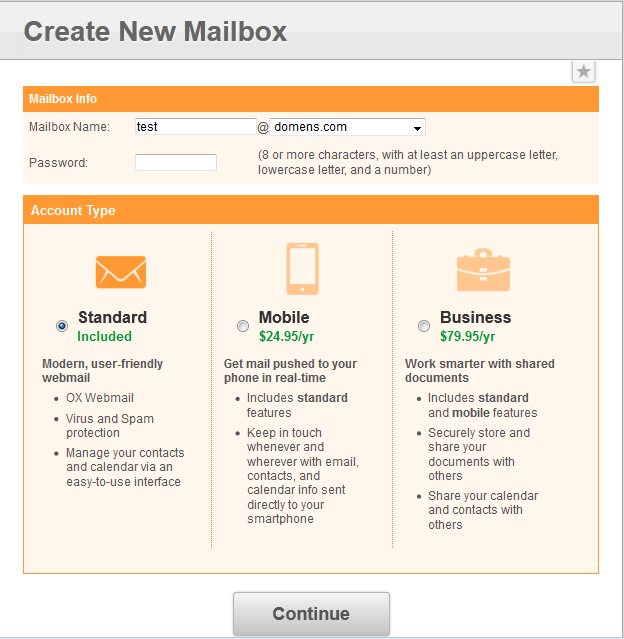
Figure 17. Creating a new mail user in vDeck
In the same section, you can get the settings for the mail client programs or start working with mail using the web client.
In the “Autoresponders” section, you can configure the response text for a specific mailing address, which will be automatically sent when you receive an email.
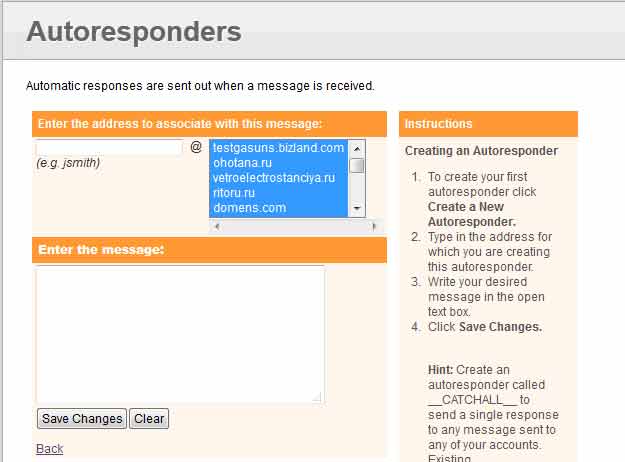
Figure 18. Configuring the answering machine in vDeck
In the “Set Catch-All Option” section, you can configure the rules for processing emails that come to non-existent addresses.
Fig. 19. Setting the“ Set Catch-All Option ”function in vDeck
To view mail through the web interface, vdeck offers users a choice of two programs: AtMail and SquirrelMail
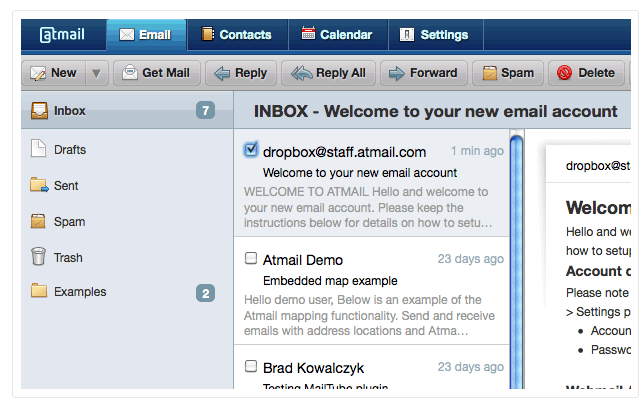
Fig. 20. AtMail program interface.
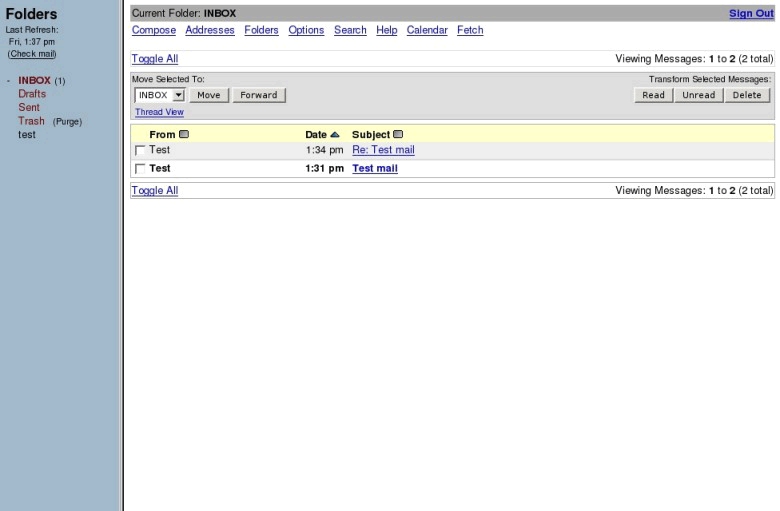
Fig. 21. SquirrelMail program interface.
In the Spam Settings section, the rules for protecting and processing spam messages are configured. In this section you can
- enable or disable anti-spam
- select actions to perform with detected spam
- edit list greylist
- Whitelist / Blacklist Editing
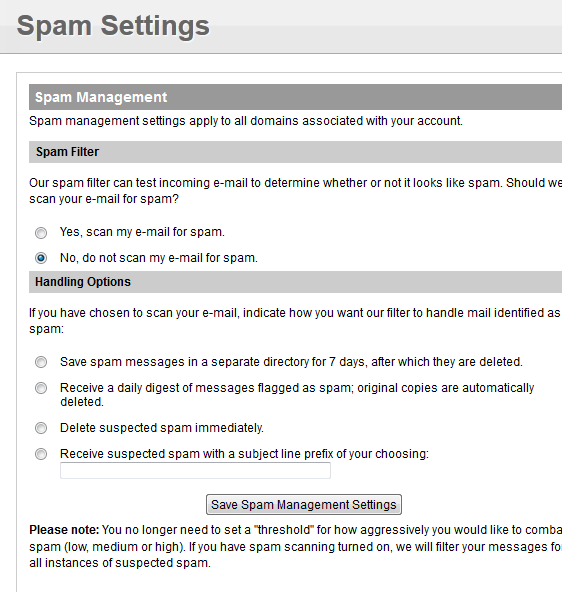
Figure 22. Configuring anti-spam in vDeck.
4.3. Ftp user administration
4.3.1. cPanel
In cPanel, you can create or delete FTP users, as well as specify a specific home folder for them and set a limit on the used disk space.
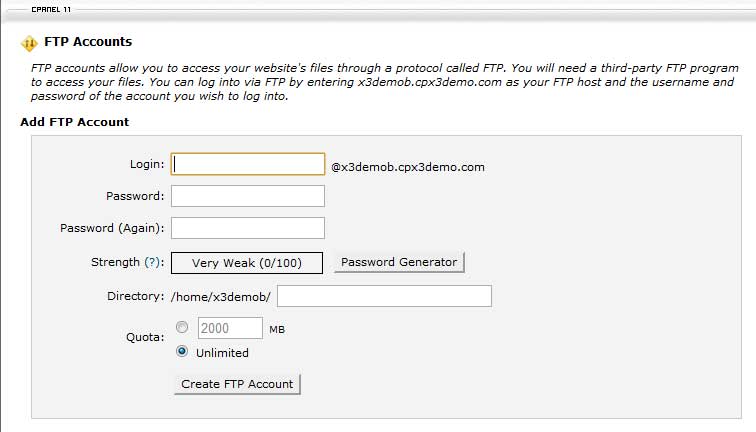
Figure 23. Creating an FTP user in CPanel.
It is very convenient that by clicking on the “Configure FTP Client” link opposite any ftp account you can get a hint on setting up an FTP connection or download configuration files for three FTP client programs.
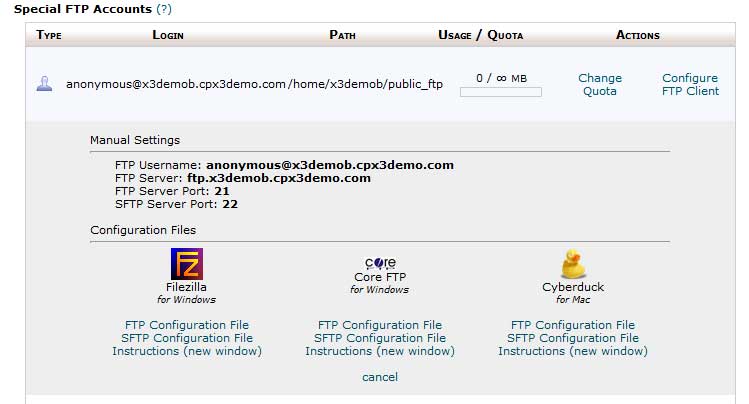
Figure 24. Tips for setting up an FTP client in cPanel.
In addition, using cPanel, you can perform two more functions for controlling ftp access:
- checking current FTP connections and disconnecting selected
- Configure anonymous FTP connectivity
4.3.2. vDeck
Managing FTP users in the vDeck panel is to configure the username, password and home folder of the user.
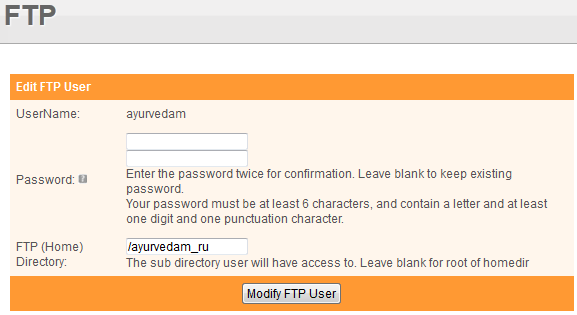
Figure 25. Configuring an FTP user account in the panel
Unfortunately, in vDeck you cannot configure a limit on the total size of files in a folder for an FTP user.
4.4. Setting up and administering a MySQL database
CPanel has the advantage of working with a database due to a wide variety of tools, and with vDeck, the interface of the database panel will be more convenient and understandable for a beginner.
4.4.1. cPanel
To work with MySQL databases, the user is provided with several tools:
1. Step-by-step wizard to create a new database, with which you can:
- create a new database
- create a new user
- set access rights for the user
2. Remote Access Database Setup Wizard
3 A wizard for working with existing databases, which allows you to:
- create or delete databases
- check existing databases for errors
- if necessary, restore damaged databases
- create or delete database users
- edit user access rights to the database
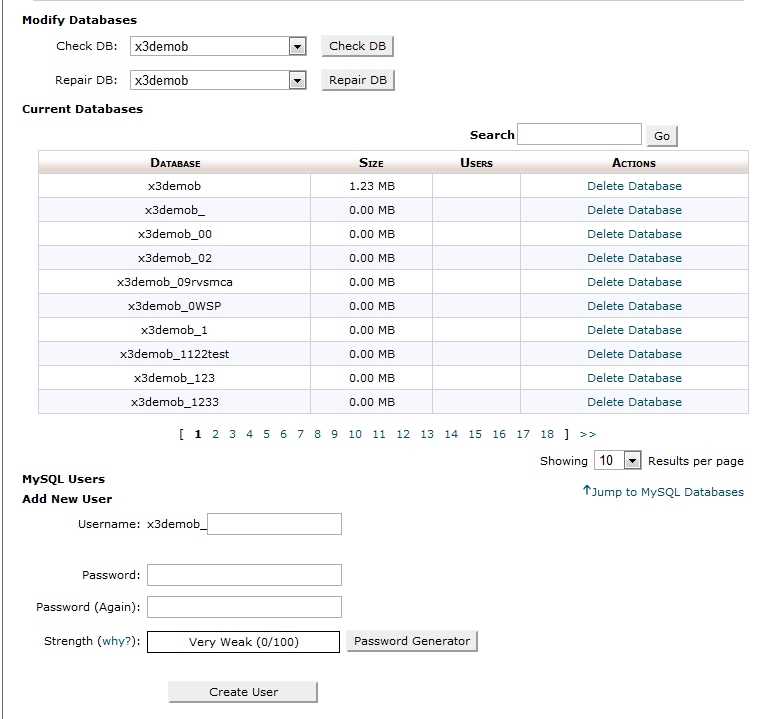
Figure 26. Working with MySQL database in cPanel The
phpMyAdmin program is also available from cPanel, which allows you to directly perform the necessary database manipulations:
- create and delete tables
- edit tables in the database
- create and debug SQL queries
- import data into a database
- export data from database
- monitor the state of the database
- and view running processes
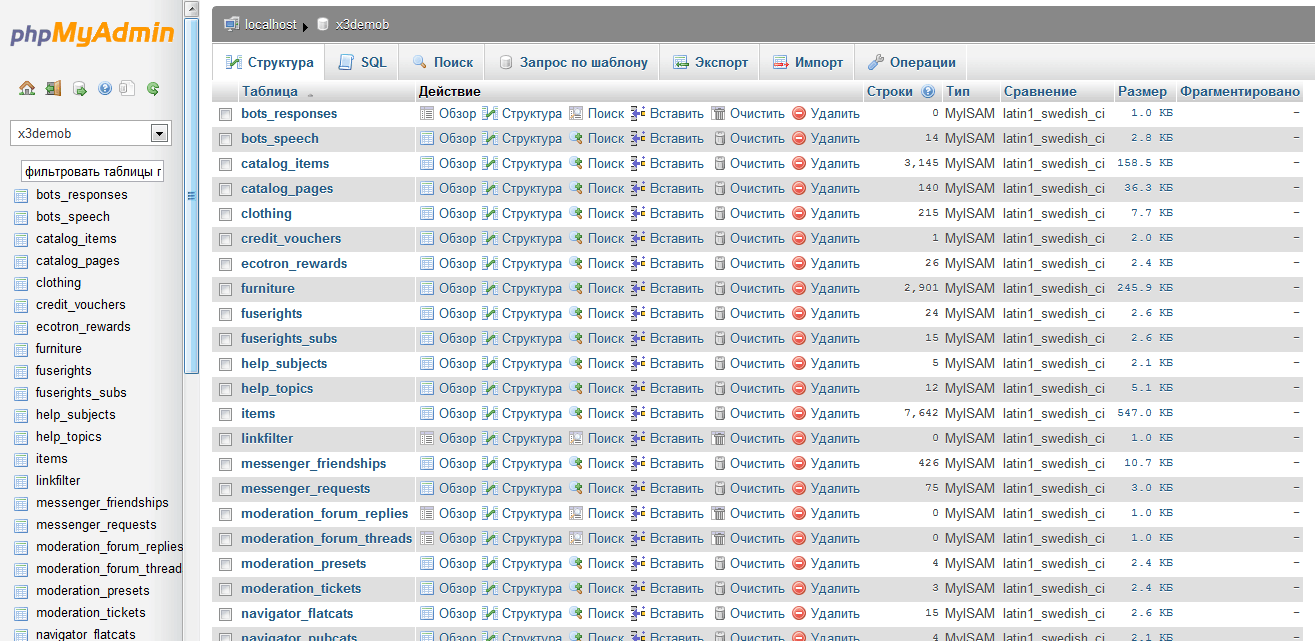
Figure 27. The phpMyAdmin program.
4.4.2. vDeck
In the vDeck panel, all the steps for setting up MySQL databases are performed in one convenient section of the MySQL Beta panel.
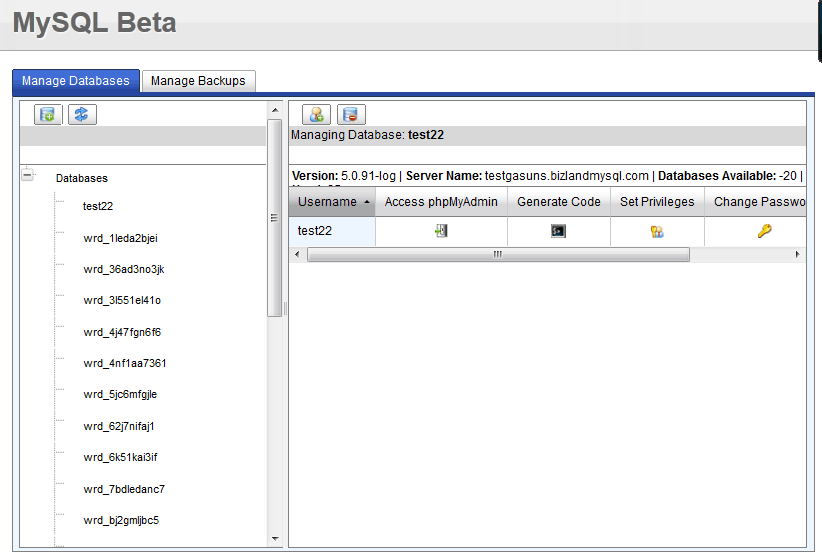
Figure 28. Working with the MySQL database in the vDeck panel
The interface of this section was thought out so that it would be easy to navigate when performing the following tasks:
- creating a new database
- creating a new database user
- delete user database
- editing database user rights
- access in phpMyAdmin

Figure 29. Creating a new database user in vDeck
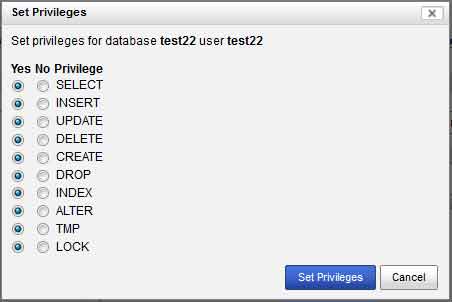
Figure 30. Setting database user rights in vDeck
In the same section, you can configure database backup

Figure 31. Backing up database in the vDeck panel.
Access to web server statistics enables the site owner to track information about people visiting the site, search engine robots, collect information about referring sources to the site, and browser options for visitors. Convenience of perception and degree of understanding of this information by the user depend on the form in which the reports of the statistics viewer are built.
4.5.1. Statistics features in cPanel
The following statistics viewing functions are available for cPanel user:
1. Recent visitors - information about the last 300 visitors indicated in the report:
- IP address of the visitor’s computer
— URL where the visitor came from
— the page the visitor came to
- browser settings
2. Bandwidth - this tool shows how much traffic the site consumes , with separation by protocols (HTTP, POP3, FTP, IMAP, SMTP) and displays graphs of changes in traffic consumption over the last day, week and year.
3. Webalizer
4. Raw Logs
5. Analog stats
6. Error log
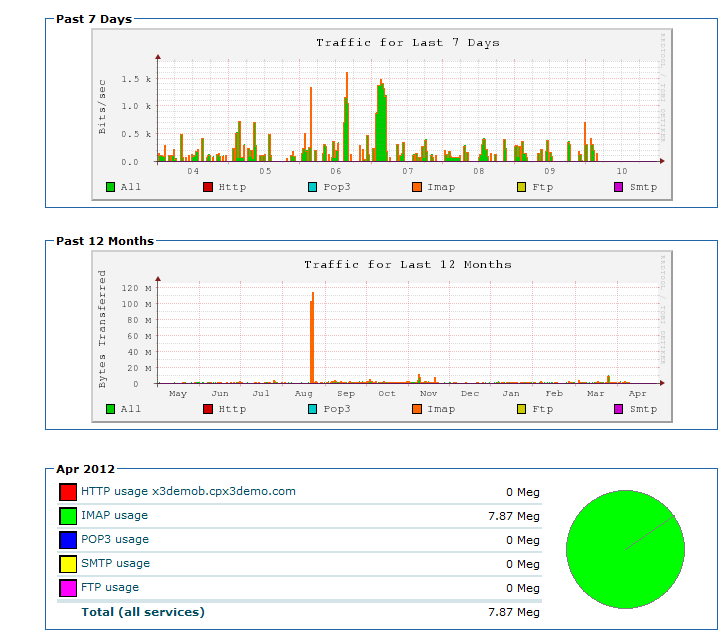
Figure 32. Traffic consumption statistics in cPanel.
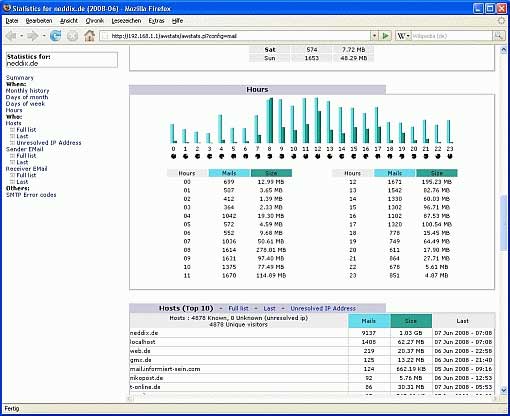
Figure 33. AwStats statistics
4.5.2. Statistics in vDeck
In the vDeck panel, statistics are limited by Webalizer. WebStats in this panel is not.

Figure 34. Configuring statistics programs in vDeck.
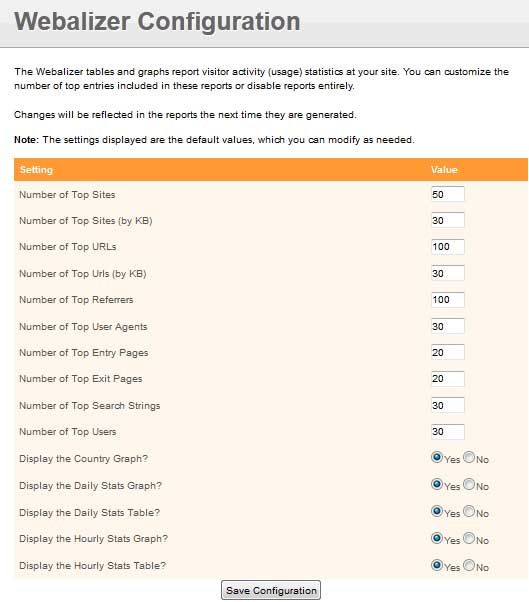
Figure 35. Setting up the Webalizer program
4.6. Convenience of working with files on the server
4.6.1. Working with files in cPanel
cPanel has two file managers:
- simple file manager
- extended file manager
A simple file manager provides a minimal set for manipulating folders and files: creating, renaming, deleting, copying, moving, you can download the selected file to your disk or vice versa upload a finished file to your server from your local disk and set access rights to files or folders.

Fig. 36 Simple file manager in cPanel The
advanced file manager in cPanel, in addition to allowing you to carry out all the necessary operations with files or folders, also provides additional features:
1. The ability to edit the selected file using one of three editors:
- simple text editor
- script editor
- HTML file editor
2. Also, the user can use the file manager to pack the selected files or folders into an archive or unpack an existing archive. The following types of archives are supported:
- Zip archive
- Tar archive
- GZiped Tar Archive
- Bzip2ed tar archive
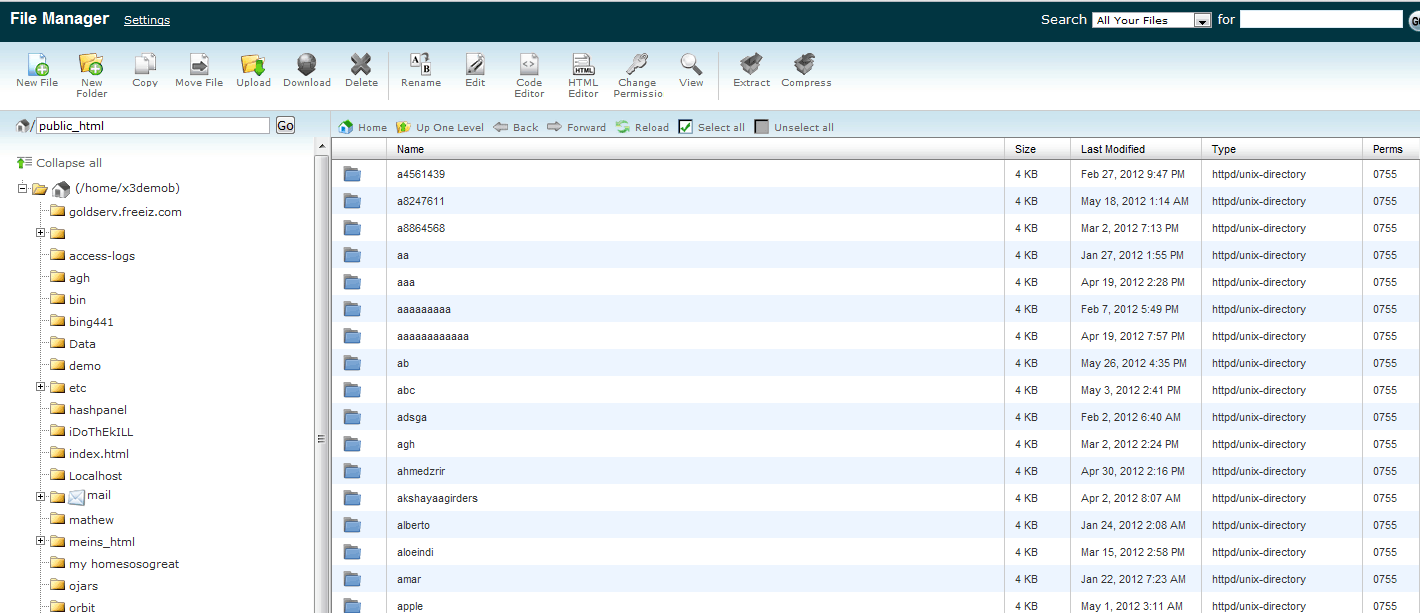
Figure 37. Advanced file manager in cPanel
4.6.2. Working with files in vDeck
The vDeck panel uses only one file manager that allows you to perform all necessary operations with files or folders, configure access rights, archive and unzip files, and edit files in the built-in editor.
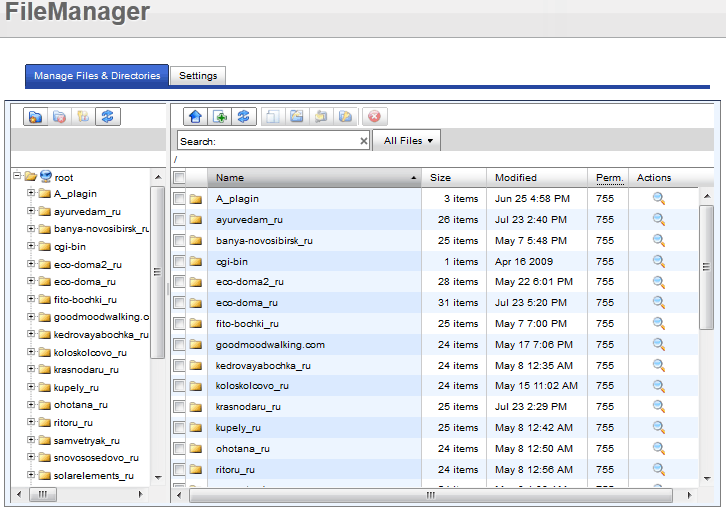
Figure 38. File manager in vDeck
The file editor can be in the plain text editing mode:
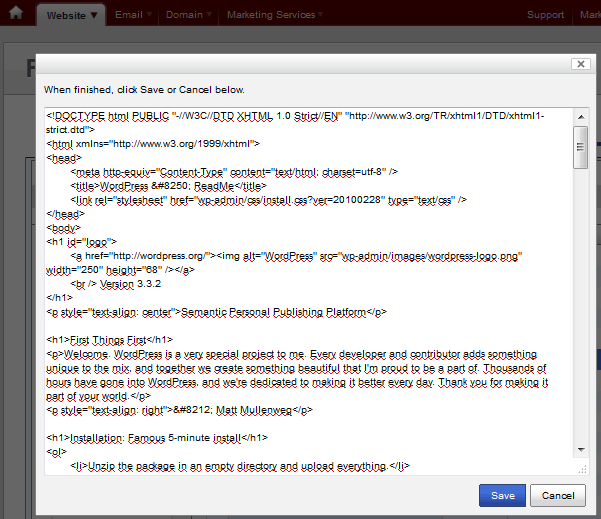
Figure 39. The simple file editor in the vDeck panel.
Or you can use WYSIWYG - an editor from TinyMCE.
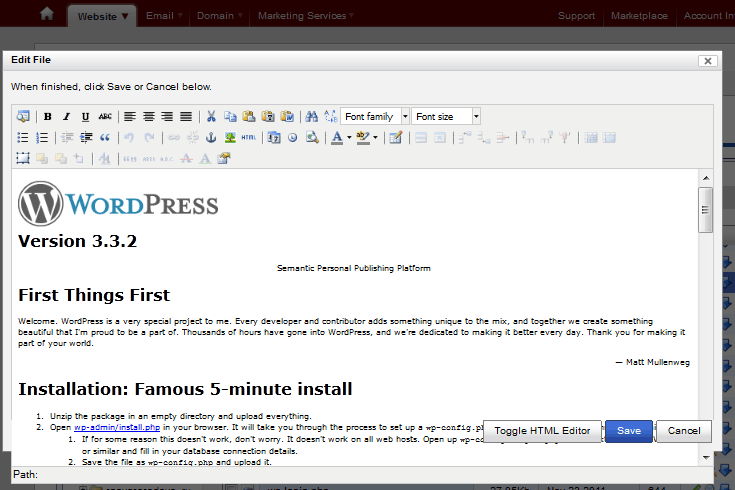
Figure 40. WYSIWYG - file editor in the vDeck panel.
4.7. Security Settings
4.7.1. Security in cPanel
Security settings in cPanel make it possible to restrict access to the site or its sections and to prevent unauthorized use of content from the site on extraneous web resources.
In the “Password Protect Directories” section, a user can configure access to folders on his site with a password for specific users. This is one way to regulate access to sections of the site for different users.
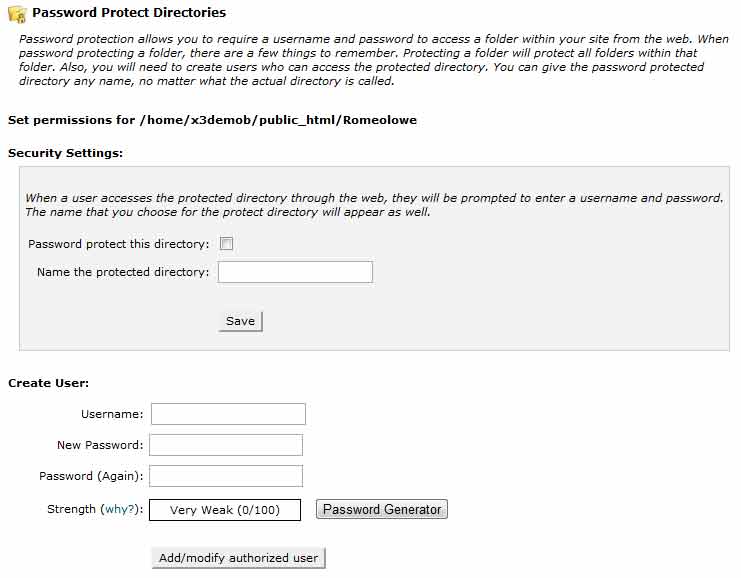
Figure 41. Configuring access to site folders in cPanel
The IP Deny Manager tool allows you to specify the IP address or address range from which the site will be unavailable. If the user does not know the IP address, then he can enter the domain name. This is necessary to limit the possibility of network attacks on the site.
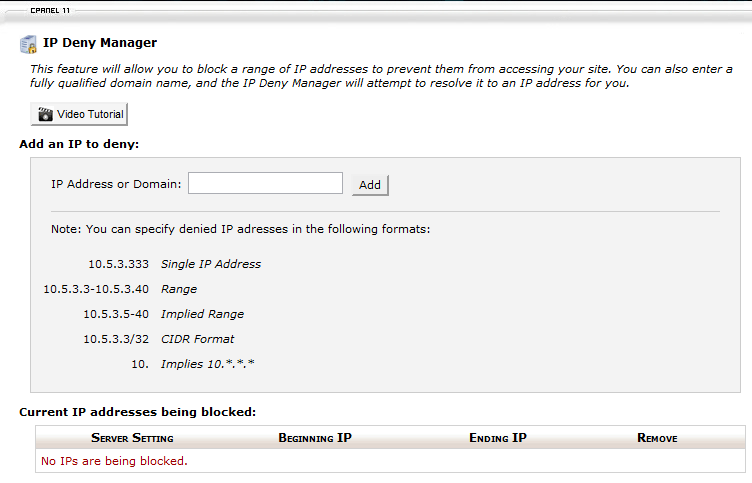
Figure 42. IP Deny Manager in the cPanel panel.
To manage certificates, keys and organize access to the site via HTTPS, use the cPanel section “ SSL / TLS Manager”.
There may be a situation where on other websites they will use the tag to

Figure 43. Configuring Hotlink Protection in cPanel
4.7.2. Security Configuration in vDeck
In this panel, everything that can be attributed to the site’s security settings is located in the “.htaccess Editor” section.
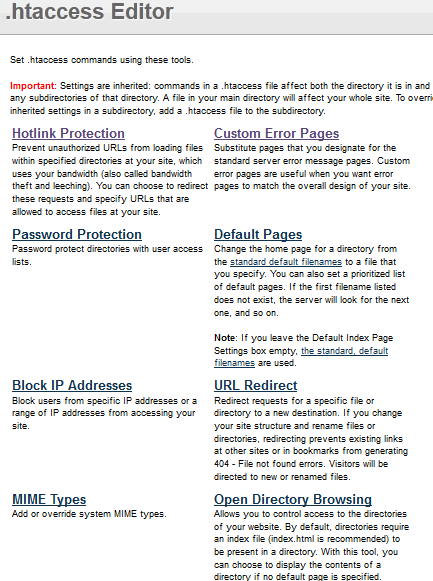
Figure 44. Security settings in vDeck.
In the “Hotlink Protection” section, you can configure protection against unauthorized access to your files.
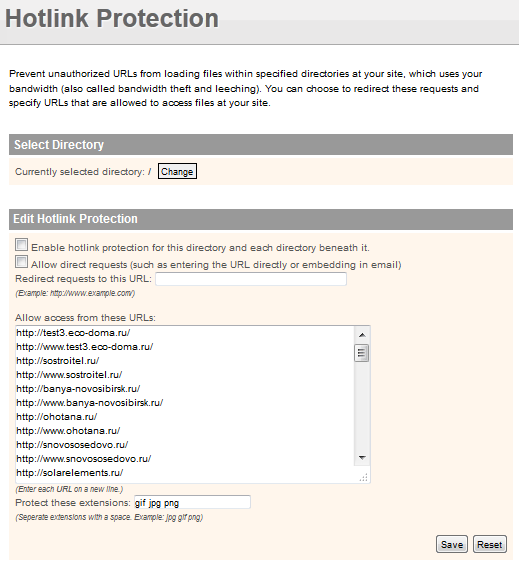
Figure 45. Configuring hotlink protection in vDeck.
The user can set access to folders on the site with a password:
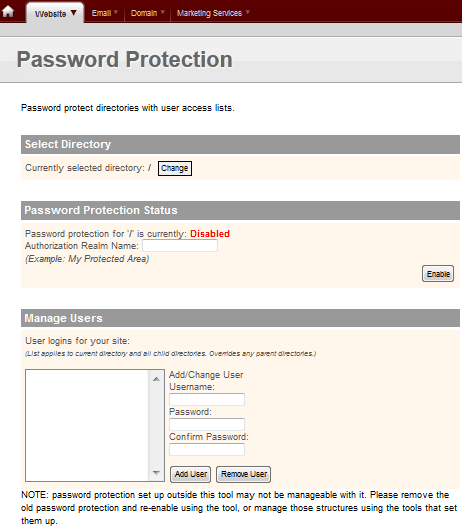
Figure 46. Configuring access to folders on the site with a password in vDeck.
In the “Block IP Addresses” section, you can restrict access to the site from specific IP addresses or from a range of IP addresses.
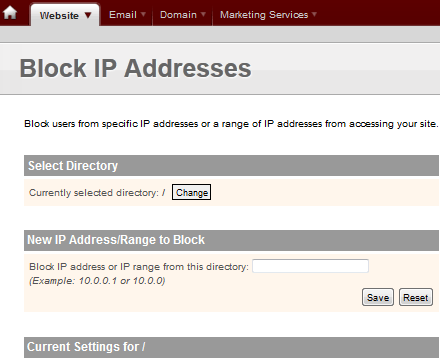
Figure 47. Blocking IP addresses in vDeck.
5. Conclusion
So, a comparison of the cPanel and vDeck panels shows that both have all the necessary features for hosting management tasks.
But cPanel has a more diverse set of tools. For example, there are three options for analyzing web server logs and creating statistical reports, or two options for a file manager. But in reality, this variety will only confuse the user, especially if he is a beginner.
vDeck looks like a simpler and more limited panel, but it is not. In fact, the vDeck panel contains all the necessary tools and functions for managing a hosting account. A serious drawback of vDeck is the lack of an AwStats statistics viewer and the inability to set tasks for the Cron scheduler, and the lack of a demo account.
The advantage of vDeck is the understandable application icons, element design (for example, working with the database) and panel navigation are designed so that even an inexperienced user can easily navigate the panel and use it conveniently.
The author bows low and reports that he is preparing a review of Parallels Plesk.
